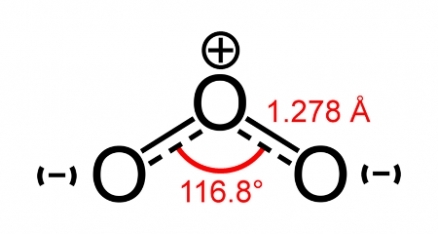Ozone Air Quality Guide
Contents
Air Quality Guide for Ozone
You may have seen the Air Quality Index reported in your newspaper. This guide provides you with more detailed information about what this index means to you. This guide will help you determine ways to protect your family's health when ozone levels reach the unhealthy range, and ways you can help reduce ozone air pollution.
Air pollution can affect your health and the environment. There are actions every one of us can take to reduce air pollution and keep the air cleaner, and precautionary measures you can take to protect your health.
| United States Environmental Protection Agency |
Air and Radiation Washington, DC 20460 |
EPA-456/F-08-001 |
Air Quality Guide for Ozone
| Air Quality Index | Protect Your Health |
|---|---|
| Good |
No health impacts are expected when air quality is in this range. |
| Moderate | Unusually sensitive people should consider limiting prolonged outdoor exertion. |
| Unhealthy for Sensitive Groups |
The following groups should limit prolonged outdoor exertion:
|
| Unhealthy |
The following groups should avoid prolonged outdoor exertion:
|
| Very Unhealthy |
The following groups should avoid all outdoor exertion:
Everyone else should limit outdoor exertion. |
What You Should Know
About Ozone and Your Health
- Ozone in the air we breathe can harm our health—particularly on hot, sunny days when ozone can reach unhealthy levels.
- Even relatively low levels of ozone can cause health effects.
- People with lung disease, children, older adults, and people who are active outdoors may be particularly sensitive to ozone.
- Ozone exposure may also increase the risk of premature death from heart or lung disease.
- This fact sheet tells you how you can find out when air quality is unhealthy and take simple steps to protect your health.
What is ozone?Ozone is a colorless gas found in the air we breathe. Ozone can be good or bad depending on where it occurs:
Where does ground-level ozone come from?Ground-level ozone is formed when two types of pollutants react in the presence of sunlight. These pollutants are known as volatile organic compounds (VOCs) and oxides of nitrogen. They are found in emissions from:
Does my area have high ozone levels?
|
How does ozone affect health?Ozone can:
These effects may lead to increased school absences, visits to doctors and emergency rooms, and hospital admissions .Research also indicates that ozone exposure may increase the risk of premature death from heart or lung disease. Who is sensitive to ozone?Some people are more sensitive to ozone than others. Sensitive groups include children; people with lung disease, such as asthma, emphysema, or chronic bronchitis; and older adults. Even healthy adults who are active outdoors can experience ozone’s harmful effects. What is an Air Quality Action Day for Ozone?Your State or local air quality agency may declare an Air Quality Action Day for Ozone when ozone levels are forecast to reach unhealthy levels. On ozone action days, you can take simple steps (see below) to reduce the pollution that results in ground-level ozone. |
Keep the Air Cleaner |
|
Office of Air Quality and Radiation (6301A) |
|
|
AQI color code
|
Who is affected? |
What is the significance? |
What action should people take? |
|---|---|---|---|
|
Green |
|
Air quality is good |
Enjoy activities |
|
Yellow |
People who are unusually sensitive to air pollution |
Air quality is a concern for people who are unusually sensitive to air pollution |
People unusually sensitive to air pollution: Plan strenuous outside activities when air quality is better |
|
Orange |
People with lung disease (including asthma), active adults, and children |
Air quality is unhealthy for people in sensitive groups |
Sensitive groups: Cut back or reschedule strenuous outside activities |
|
Red |
Everyone, especially people with lung disease (including asthma), active adults, and children |
Air quality is unhealthy for everyone |
Everyone: Cut back or reschedule strenuous outside activities Sensitive groups: Avoid strenuous outside activities |
|
Purple |
Everyone, especially people with lung disease (including asthma), active adults, and children |
Air quality is very unhealthy for everyone |
Everyone: Significantly cut back on outside physical activities Sensitive groups: Avoid all outside physical activities |
For more information, visit www.airnow.gov


1 Comment
Emma Cay wrote: 01-06-2012 02:38:11
Thanks so much for sharing. ozone waste water can be used to do so very many things. Keep up the good work.